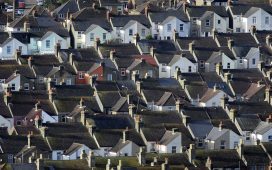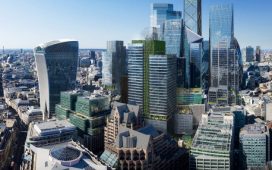Stay informed with free updates
Simply sign up to the UK house prices myFT Digest — delivered directly to your inbox.
Flat prices have underperformed all other property types in the UK over the past five years as the shift to flexible working, landlords exiting the market and concerns about cladding hit the segment.
The average cost of an apartment has risen at half the pace of any other property type since 2019, before the Covid-19 pandemic, according to a Financial Times analysis of official data.
Figures from Land Registry, the register of property ownership, show the average flat cost £232,400 in June, up 14 per cent on the same month in 2019.
In the same period, the average property price rose by about 25 per cent to £288,000, while detached, semi-detached and terraced house prices rose by almost 30 per cent.
Differences in price growth, which was broadly equal across property types between 2010 and 2019, emerged across the country with the Covid-induced “race for space” and persisted as the housing market absorbed the impact of rising interest rates.
Tom Bill, head of UK residential research at estate agency Knight Frank, said the trend in flat prices was in part the result of “more permanent changes to the way people are looking at their work-life balance, with increased working from home”.
Paul Dales, economist at consultancy Capital Economics, said flat prices had been hit by a “structural shift in people wanting more space after the pandemic”, as well as increased “worries about cladding” in the wake of the Grenfell Tower fire in 2017.
Flames tore up the external cladded walls of the high-rise apartment block in west London in the disaster, which claimed the lives of 72 people.
A public inquiry this week said the deaths were avoidable and that successive governments had failed to hold building product manufacturers to reliable safety standards, while housebuilder Barratt warned fixing fire safety issues identified after the blaze would take another three to five years.
Richard Donnell, executive director at property consultancy Houseful, said the Grenfell fire and a probe opened in 2019 by the competition watchdog into the leasehold housing market, which intervened over the rise in ground rents and potentially unfair sales practices, had “combined to drive . . . underperformance of flat prices”.
Landlords selling properties to avoid rising taxes and mortgage costs have also contributed to the underperformance of flat prices, which has been geographically widespread but most severe in London.
Analysis of the Land Registry data showed apartment prices in the capital — where more than half of households live in a flat — barely changed between June this year and June 2019, making it the worst-performing region in England and Wales.
Donnell said tax changes affecting buy-to-let investors and overseas buyers had “hit demand at a time when there was a lot of uncertainty about investing in London generally by business” after the Brexit vote.
Other factors have been at play, including an increase in mortgage-free buyers, who tend to purchase houses rather than flats, continuing to support housing demand when the surge in mortgage costs hit the market. Affordability issues have also pushed some people out of London.
A string of rate rises by the Bank of England took the cost of borrowing from a record low of 0.1 per cent in late 2021 to a 16-year high of 5.25 per cent in August last year. The increase led to higher mortgage rates, making it more difficult for prospective buyers.
Matt Thompson, head of sales at estate agency Chestertons, said London flat prices were “beginning to recover”, helped by cheaper mortgage products after the BoE cut rates last month for the first time since Covid struck.
“What will eventually happen is that the market rebalances and when flat prices start to look attractive or more attractive . . . then people will move back in,” Bill said.












